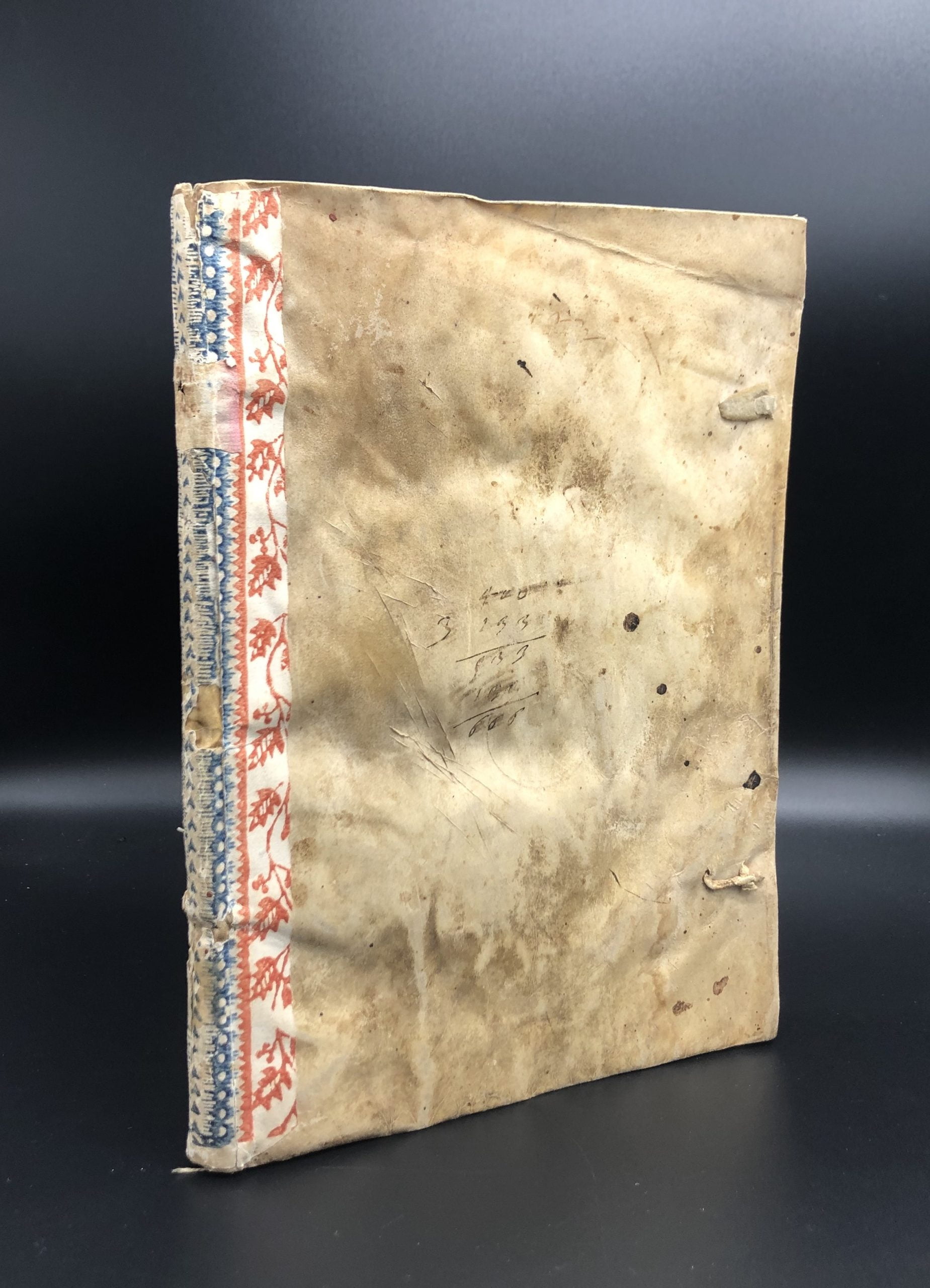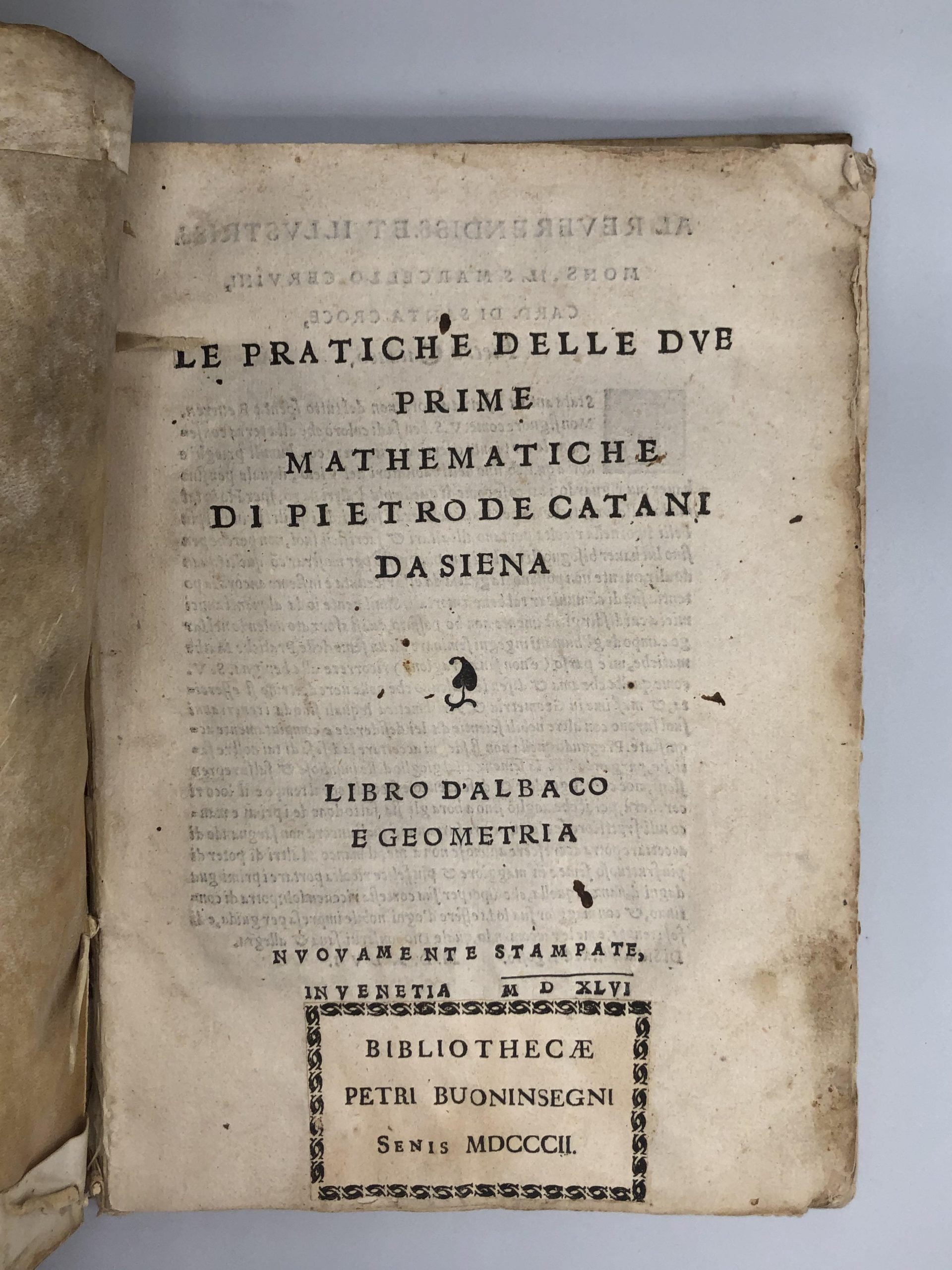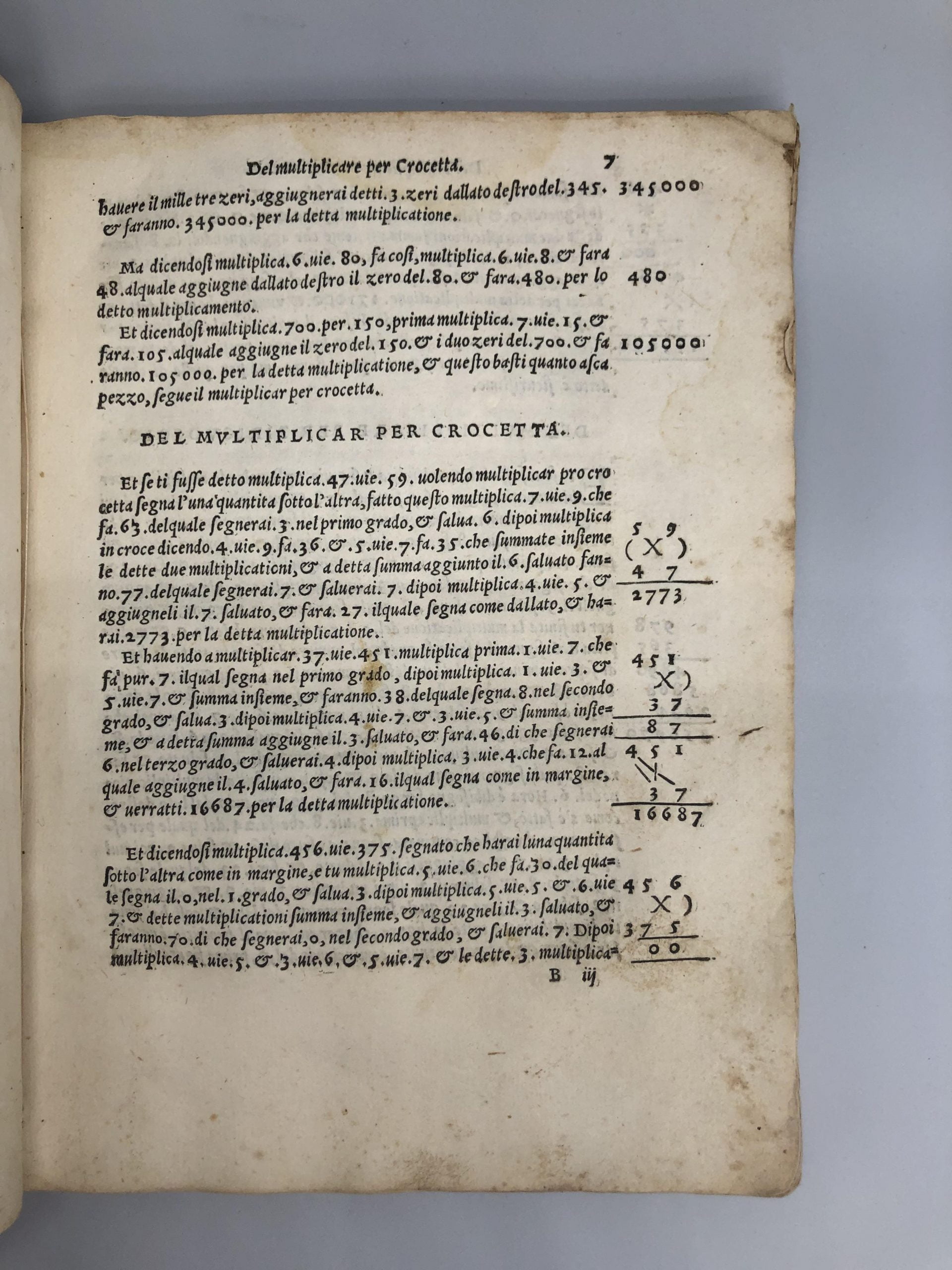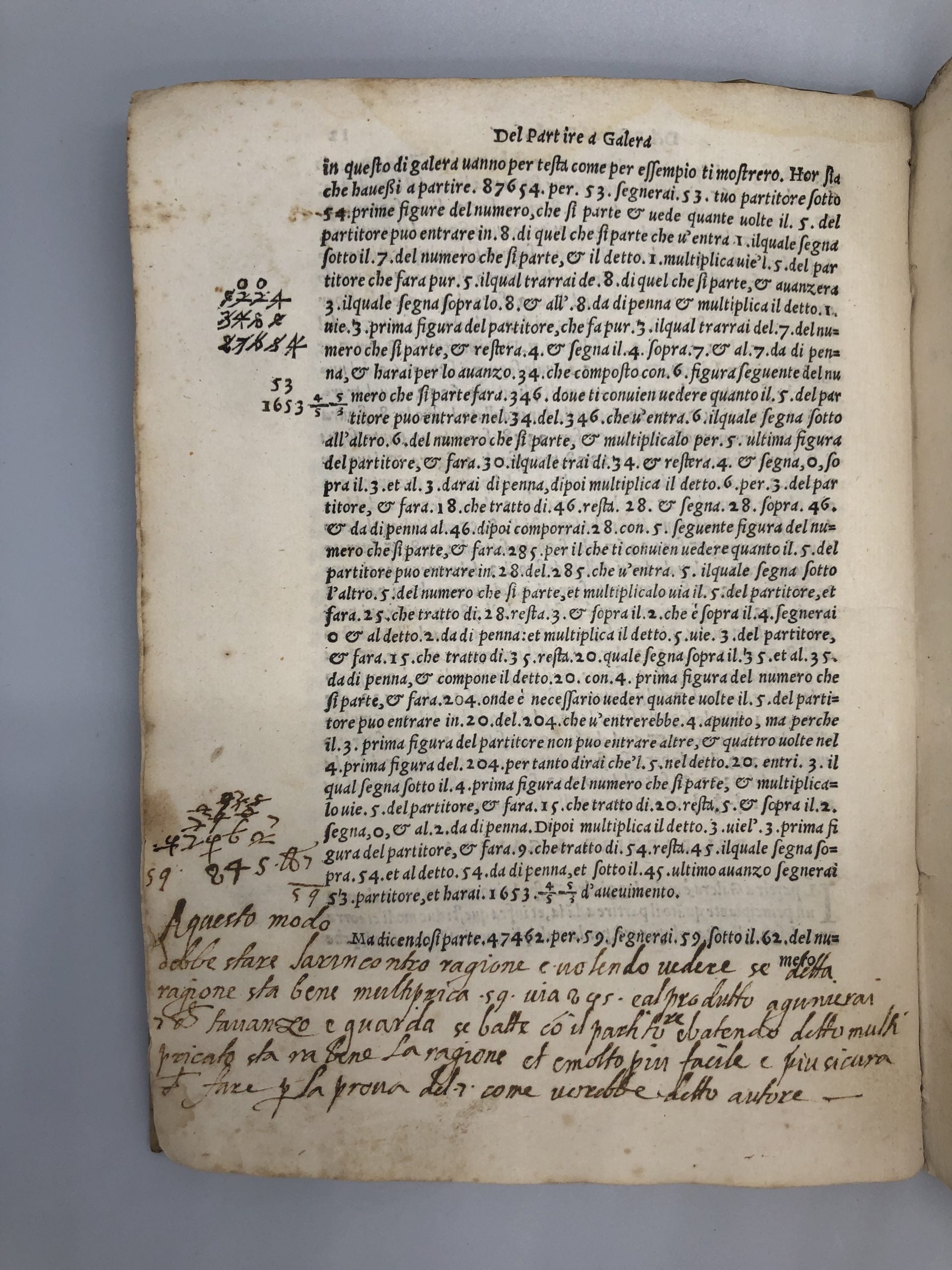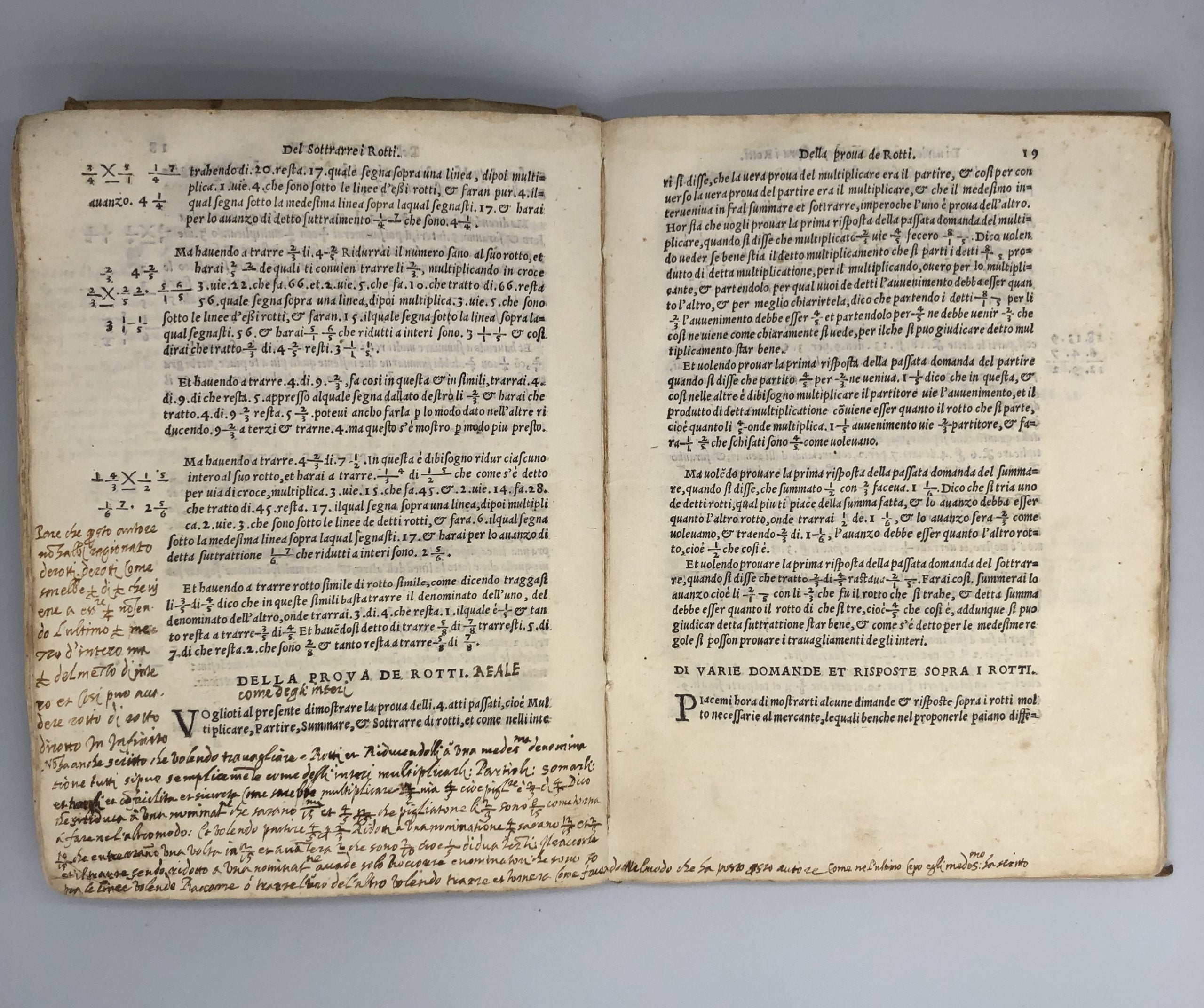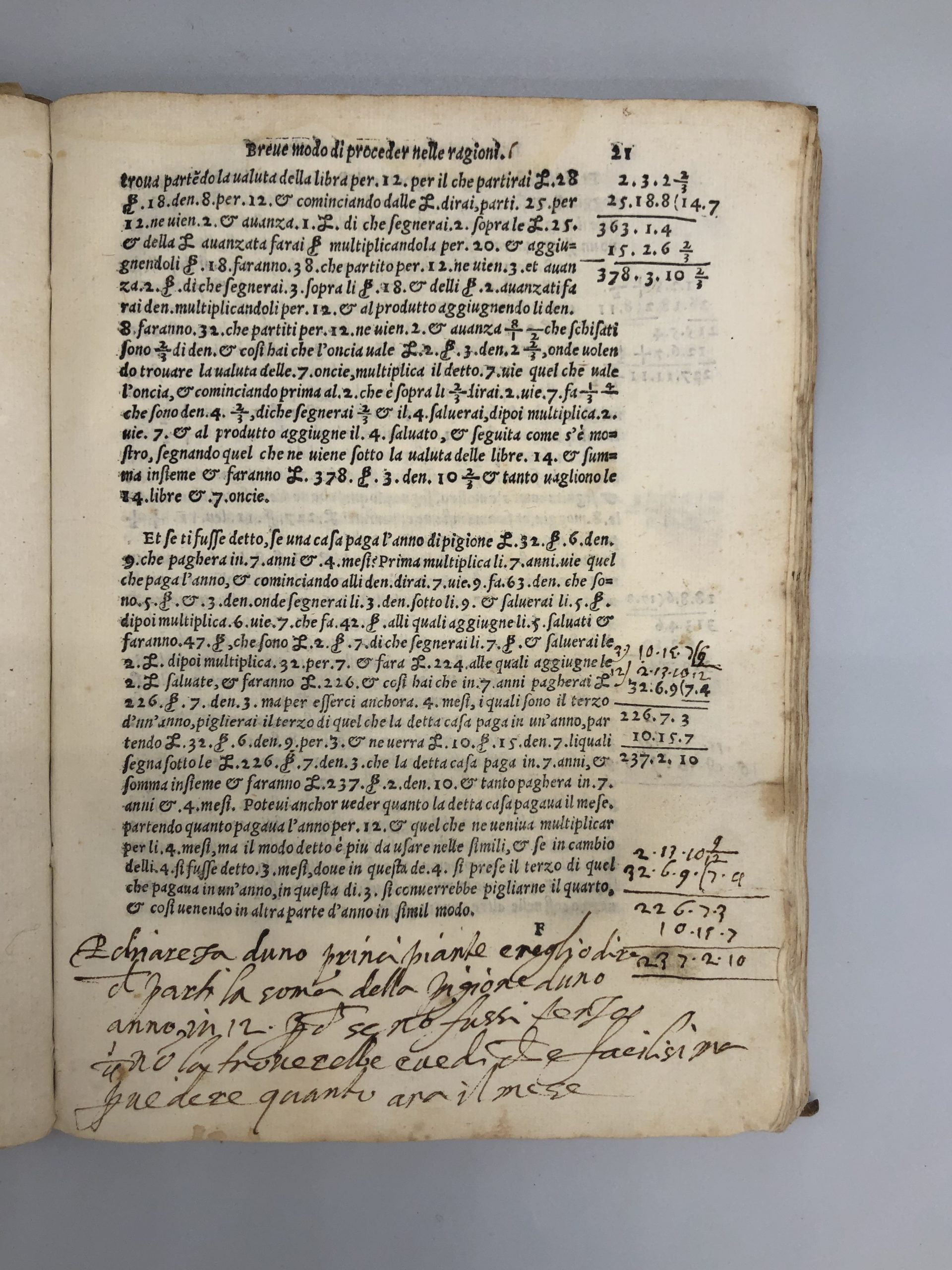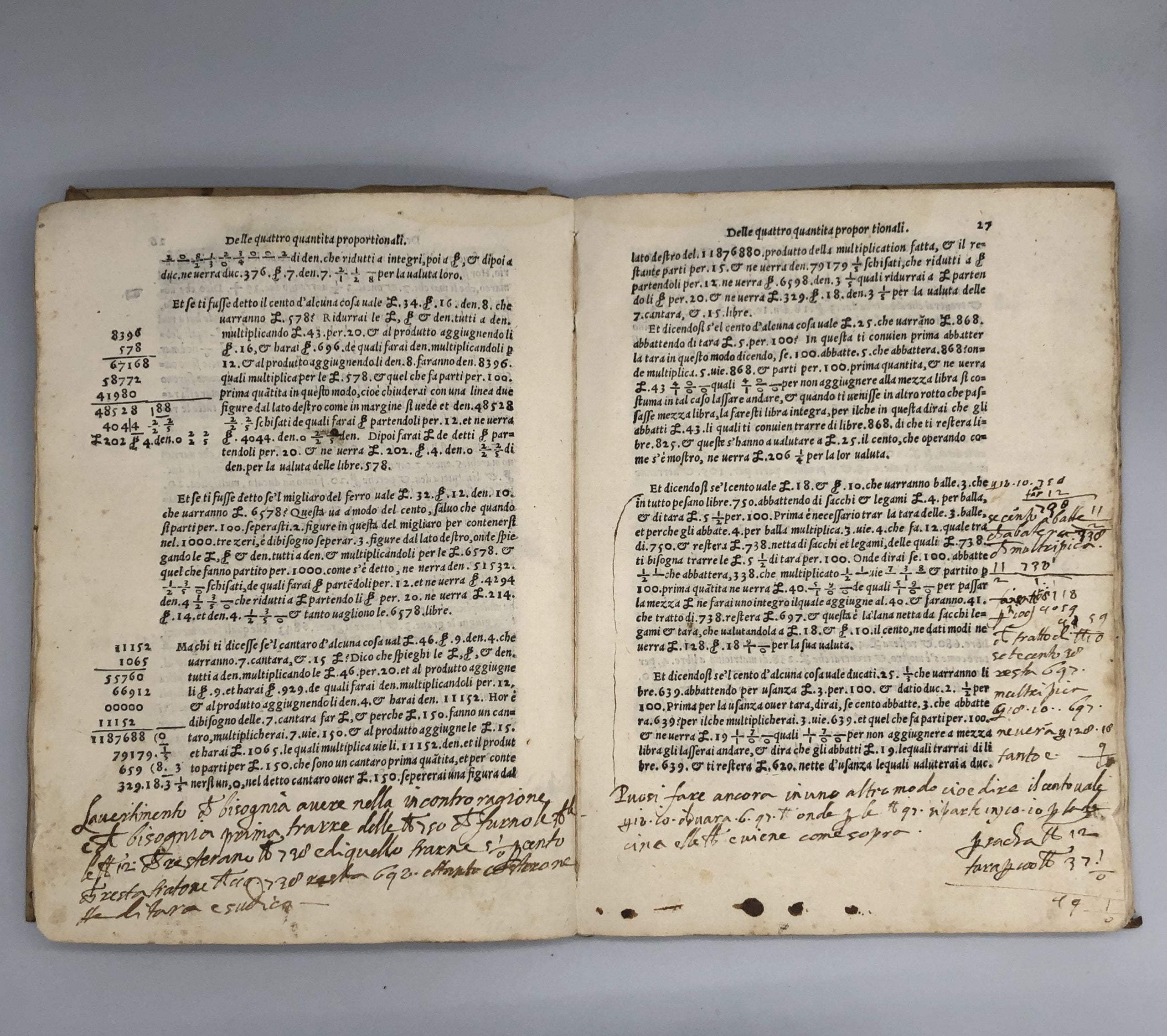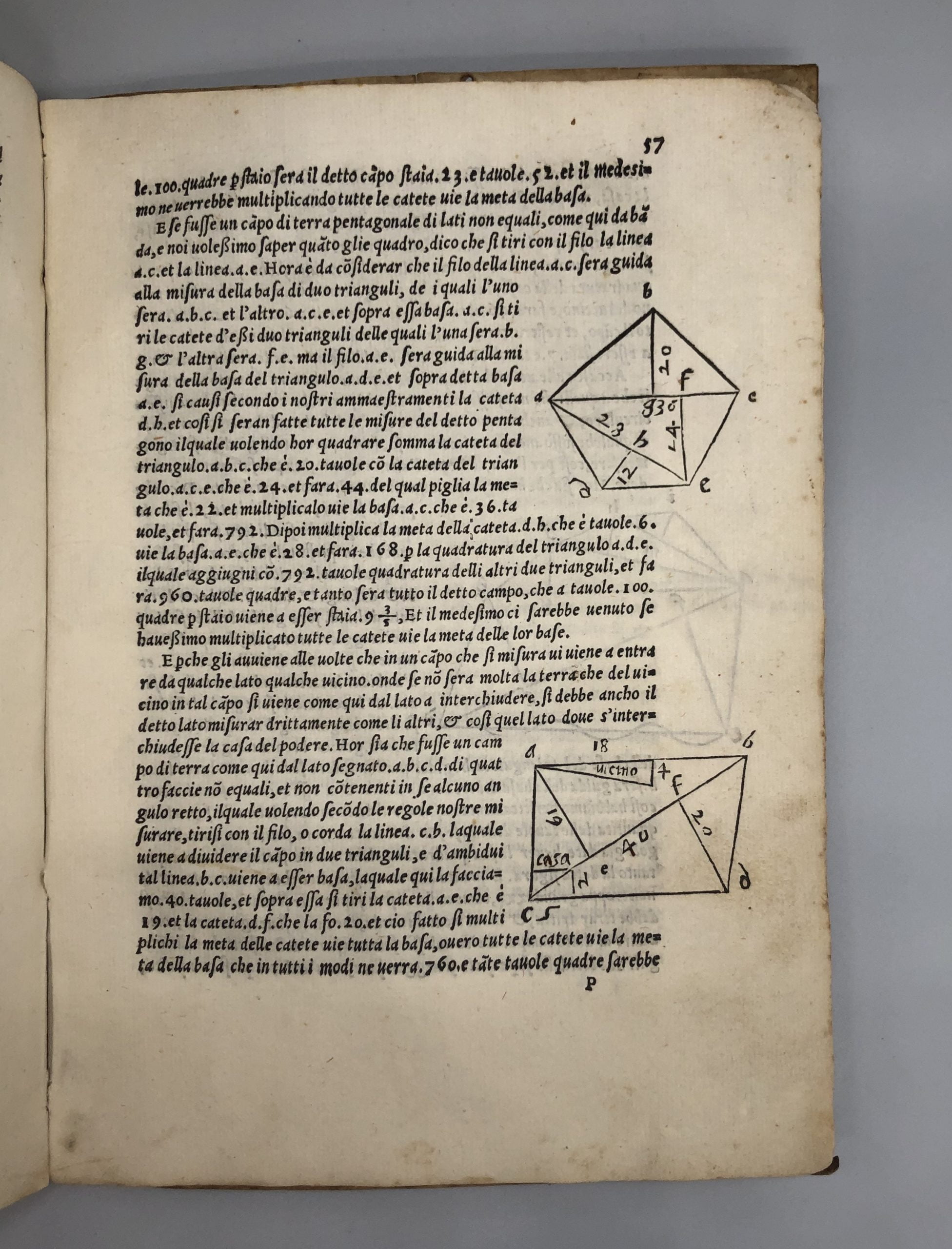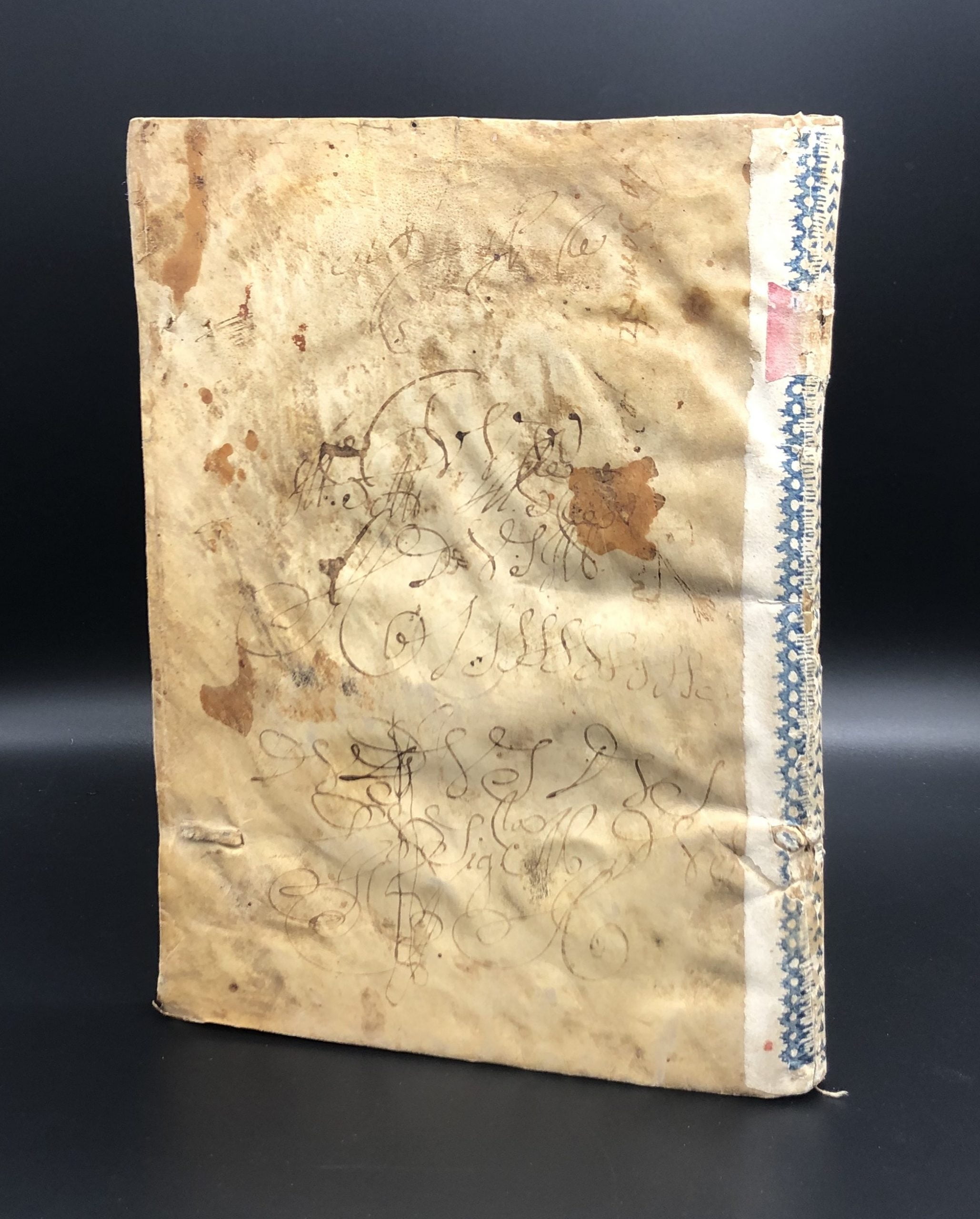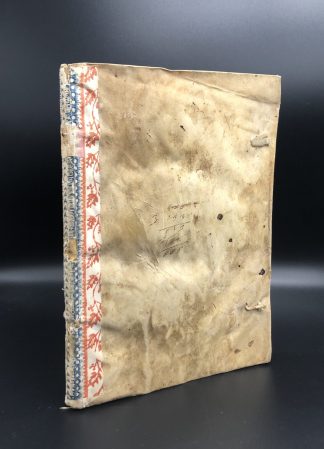CATANEO, Pietro
A MATHEMATICIAN’S ANNOTATED ARITHMETIC
Le pratiche delle due prime mathematiche.
Venice, per Niccolò Bascarini, 1546£4,500.00
FIRST EDITION. 4to, ff. 64, final blank added for annotation. Italic letter, little Roman. Geometrical diagrams, decorated initials. T-p a bit dusty and frayed at fore-edge, faint waterstain to upper margin in places, little thumbing and marginal spotting, marginal oil stain to few outer corners, extensive slightly later ms. correction and mathematical annotation. A very good copy in contemporary vellum, traces of ties, spine reinforced with C18 patterned paper. Bookplate of Pietro Buoninsegno, Siena, 1802.
A most appealing copy of the first edition of this influential treatise on arithmetic and geometry—‘fairly practical and in many respects in advance of its time’ (Smith, ‘Rara’, 242). Pietro Cataneo (1510-74) was a mathematician from Siena with a side interest in architecture. ‘Le pratiche’ provides fundamental knowledge of arithmetic and geometry for accounting. The first part discusses the four mathematical operations (addition, subtraction, multiplication and division) including their applications in the counting of currency of different value and weight as well as applied problems based on real life—e.g., the three jealous husbands who want to cross a river with their wives on a boat which can only hold two people at a time. The second is concerned with basic geometry, with a thorough examination of geometrical triangulation applied to measuring and subdividing allotments. The Florentine influence of his background surfaces in the choice of the word ‘biricuocolo’ to mean multiplication (Smith, ‘Rara’, 242). The slightly later annotator of this copy wrote on the final blank the procedure to extract the square and cube root of specific numbers. He also highlighted sections concerning gold and silver—e.g., calculating the number of carats before and after refinery, and the proportion of precious metals in alloys. He was probably a teacher. For a couple of sections—on the calculation of the quantity of wool as compared to the bags to transport it, the quantity of silver in coins and the payment of house rents—he added his own alternative method, calling it ‘better’ or ‘clearer for beginners’. In another, on fractional subtraction, he said it seemed to him that ‘the author had not considered’ the issue of what are known today as ‘continued fractions’, a study of which did not appear in print until 1579.
Only Michigan and UChicago copies recorded in the US.Riccardi I/1, 317: ‘rarissimo libro’; Smith, Rara, 242; BM STC It., p., 158 (not this ed.); Bib. Chemico-mathematica, 732. Not in Brunet.In stock


